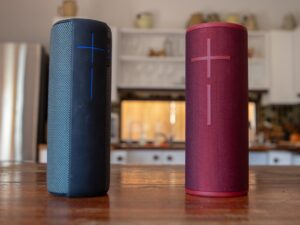In the age of digital entertainment, streaming devices have become a staple in many households, offering easy access to a vast array of content. Among the most popular options are Roku, Amazon Fire Stick, and Apple TV. Each of these devices brings something unique to the table, catering to different preferences and ecosystems. This article provides an in-depth comparison of Roku, Amazon Fire Stick, and Apple TV to help you decide which streaming device best suits your needs.
Roku: The User-Friendly Choice
Roku has built a reputation for its simplicity and extensive content offerings, making it a favorite among streaming enthusiasts.
Key Features
- Content Availability: Roku offers access to over 500,000 movies and TV episodes across thousands of free and paid channels, including popular services like Netflix, Hulu, Disney+, and Amazon Prime Video.
- Interface: The user interface is straightforward and easy to navigate, making it accessible for users of all ages.
- Device Variety: Roku provides a range of devices, from the affordable Roku Express to the high-end Roku Ultra, catering to different budgets and needs.
- Voice Search: Many Roku devices come with voice search capabilities, allowing users to find content quickly and easily.
Pros and Cons
Pros:
- Extensive content library
- User-friendly interface
- Wide range of device options
- Regular software updates
Cons:
- Ads on the home screen for some models
- Limited integration with smart home ecosystems
Amazon Fire Stick: The Integrated Solution
Amazon Fire Stick, powered by Fire OS and Alexa, offers a comprehensive streaming experience with strong integration into the Amazon ecosystem.
Key Features
- Alexa Integration: The Fire Stick comes with Alexa voice remote, enabling users to control their TV, search for content, and even manage smart home devices using voice commands.
- Content Access: Users can access popular streaming services like Netflix, Hulu, and Disney+, along with Amazon Prime Video, which is seamlessly integrated into the device.
- App Store: The Amazon Appstore provides a wide range of apps and games, enhancing the device’s functionality beyond streaming.
- Device Options: From the budget-friendly Fire TV Stick Lite to the 4K-capable Fire TV Stick 4K Max, there are options for various needs and preferences.
Pros and Cons
Pros:
- Strong integration with Alexa and Amazon services
- Wide range of device options
- Access to a broad selection of apps and content
- Affordable pricing
Cons:
- Ads on the interface for some models
- Heavier focus on Amazon content
Apple TV: The Premium Experience
Apple TV is designed for those deeply invested in the Apple ecosystem, offering a premium streaming experience with top-notch features.
Key Features
- 4K HDR Support: Apple TV 4K supports high-resolution 4K HDR content, delivering exceptional picture quality.
- Siri Integration: With Siri voice control, users can search for content, control playback, and interact with smart home devices.
- Apple Ecosystem: Apple TV integrates seamlessly with other Apple devices and services, such as Apple Music, Apple Arcade, and Apple HomeKit.
- App Store: The tvOS App Store offers a wide range of apps, including streaming services, games, and productivity tools.
Pros and Cons
Pros:
- Superior picture and sound quality
- Seamless integration with Apple devices and services
- Wide range of apps and content
- Strong focus on privacy and security
Cons:
- Higher price point compared to other streaming devices
- Best suited for users already invested in the Apple ecosystem
Comparative Analysis
When comparing Roku, Amazon Fire Stick, and Apple TV, several factors come into play, including content availability, ease of use, device integration, and overall value.
Content and Apps
- Roku: Offers the most extensive content library with access to numerous free and paid channels. Ideal for users looking for variety and simplicity.
- Amazon Fire Stick: Provides robust content options with a strong emphasis on Amazon Prime Video and apps available through the Amazon Appstore.
- Apple TV: Features a curated selection of apps and content, with a focus on high-quality media and seamless integration with Apple services.
Interface and Usability
- Roku: Known for its user-friendly interface, making it easy for anyone to navigate and find content.
- Amazon Fire Stick: Features a visually appealing interface with integrated voice control via Alexa, but with a noticeable focus on Amazon content.
- Apple TV: Offers a sleek and intuitive interface, especially beneficial for users familiar with Apple products.
Price and Value
- Roku: Provides excellent value with a range of devices catering to different budgets, making it accessible to a broad audience.
- Amazon Fire Stick: Competitive pricing with strong features, especially for users already in the Amazon ecosystem.
- Apple TV: Higher price point, justified by its premium features and seamless integration with Apple services, making it a great choice for Apple enthusiasts.
Conclusion
Choosing the right streaming device depends on your specific needs and preferences. Roku stands out for its extensive content library and user-friendly interface. Amazon Fire Stick offers strong integration with Amazon services and Alexa, providing a comprehensive streaming experience. Apple TV is unmatched in its premium quality and seamless integration with the Apple ecosystem.
By understanding the strengths and weaknesses of each streaming device, you can make an informed decision that enhances your entertainment experience, providing easy access to your favorite content in a way that suits your lifestyle.




